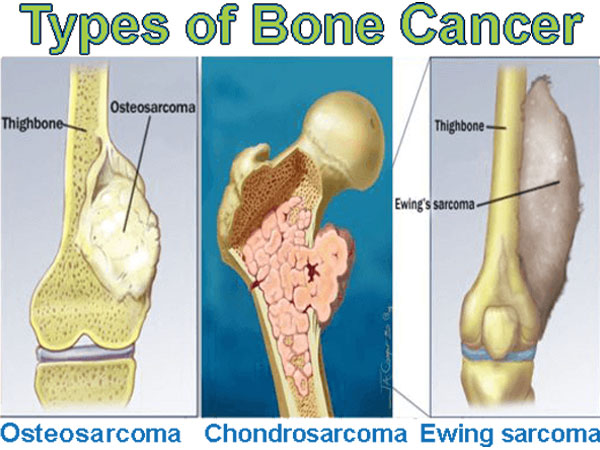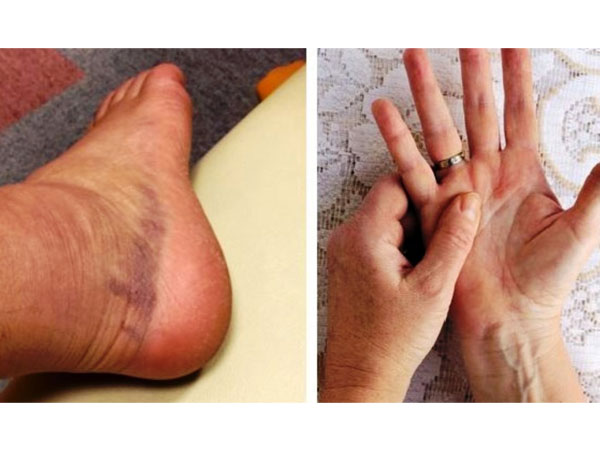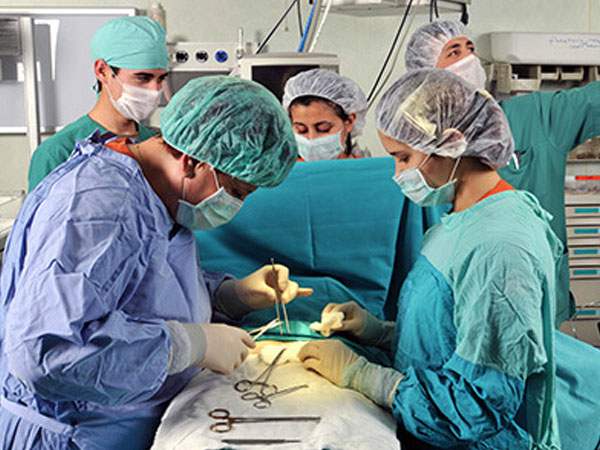Dr Manish Singhal - The best Cancer Specialist in Delhi
Best Bone Cancer Doctor In Noida
Bone Cancer
Though it’s an uncommon type of cancer, it can start in any part of any bone. Cancer starts when healthy cells in the bone change and develops out of control, forming a mass called a tumor. Bone cancer can be either dangerous or gentle. A cancerous (dangerous) tumor is infectious, which means it can develop and spread to other parts of the body. A kind or gentle tumor, on the other hand, can destroy the cortex and transfer to nearby tissue. If bone cancer cells get into the bloodstream, they can distribute to various other parts of the body, mainly the lungs, through a process known as metastasis. A gentle tumor, also known as benign tumor means that the tumor can grow, but it won’t spread to other parts of the body. Though a benign tumor doesn’t spread outside the bone, it can grow large enough to press on connected tissue, weaken the bone and cause the bone to break.
An adult human skeletal system is basically made up of 206 bones. Bones protect the internal organs. Allowing people to stand up straight and properly and attach to muscles, which allow movement in the body. Bones are basically connected to other bones by bands of tough, cancer tissue called ligaments. Cartilage covers and shields the joints where bones get together. They are hollow and filled with bone marrow, which is the mushy, red tissue that shields blood cells. The cortex is the hard, outer portion of the bone.
Before we learn more about the intricacies of bone cancer, it is important to address the current difficulties it faces due to the Covid-19 pandemic. Health administrators around the world have brought in many recommendations for cancer patients during these times, but for those whose treatment plans cannot be altered or postponed, Dr. Manish Singhal, the Best Oncologist in Noida and Delhi NCR is offering chemotherapy at home, video consultation, and many more advanced services keeping the preventive measures in place.
Types of Bone Cancers
Each bone cancer patient is different from the other. The best Bone Cancer doctor in Noida at Cancer Consult India has deep experience in properly staging and diagnosing the disease and developing a treatment plan which is best to treat your bone cancer.
Primary Bone Cancer
Primary bone cancers are a specific subtype of a group of cancers which are known as sarcomas. They are cancers that begin in bone, muscle, connective tissue, blood vessels or fat and can be brought into anywhere in the body. There are various types of primary bone cancers.

Osteosarcoma
Osteosarcoma, also known as osteogenic sarcoma, is one of the most common kinds of bone cancer and generally begins in bone cells in the arms, legs or pelvis. It happens mostly in people between the age of 10 to 30 and is more common in males than females.
Chondrosarcoma
Chondrosarcoma forms in cartilage cells and is the second most basic form of the ailment. This type of bone cancer barely happens in individuals under the age of 20 and the chances of creating it increase with age.
Ewing tumor
Ewing tumor, also known as Ewing’s sarcoma, typically starts in the bones, however, can also start in other tissues and muscles. It is the third most common form of primary bone cancer. It occurs mostly in children and teenagers and is barely seen in adults, especially after the age of 30.
Fibrosarcoma and malignant fibrous histiocytoma
Fibrosarcoma and malignant fibrous histiocytoma typically develop in the soft tissue all over the ones, such as tendons, ligaments, muscle or fat. According to the best oncologist in Delhi, this kind of bone cancer also tends to occur in older people and usually harm the arms, legs or even jaw. Huge cell tumors of bone can have gentle and hard forms, although the malignant, which is the hard form, is usually less common. It usually occurs in the arm or leg bones of young and middle-aged individuals and barely distributes to distant parts of the body. However, these cancers may return after surgery and the chances of spreading or distributing to distant sites increase with each local recurrence. Chordoma harms bones in the spine and the base of the skull. This type of bone cancer happens mostly in adults 30 or older, mostly in men, says the best oncologist in India. It tends to be slow-growing with a mild risk of spreading but may return at the original site if not removed properly during the surgery and may eventually spread to the lungs, liver or lymph nodes.
Symptoms
Various symptoms may merge as a form of bone cancer, but feeling ‘pain’ is still the best and the most common symptoms of bone cancer. Whereas it may happen in any bone in the body, it mostly occurs in the long bones of the legs or the arms.
A large number of bone cancer symptoms may also be caused such as arthritis, osteoporosis or an injury. If you’re feeling any of these symptoms, you need to talk to your doctor or get in touch with the Best Oncologist in Noida in order to know the reason and get the accurate treatment.

Few common symptoms are:
Bone Pain
As we have told you before, pain is one of the most common symptoms of bone cancer and may become noticeable as the tumor grows. Bone pain can cause a severe ache in any bone region, for instance, back, pelvis, legs and arms. Early on, the pain can only occur at night or when you are often active. And as cancer develops, though, the ache may continue.
Swelling
The region in which the pain is localized may start to show the symptoms of swelling, or a lump or mass may be present.
Fractures
Cancerous cells can make the bone weak and this many of the times, result in fracture The break may happen in an area of the bone that had previously been in a lot of pain for a long period of time span.
Difficulty in moving
In a few cases, if the location of the tumor is near a joint, it may make even the easiest of the movements painful or most difficult.
Various other symptoms are:
- Unintended weight loss
- Fatigue
- Difficulty in breathing
Know the Risk Factors
Although the exact reason for individuals creating bone cancer is unknown, few risk factors that may increase a person creating a risk factor have been identified. Here are all the risk factors connected to bone cancer.
According to the Best Oncologist in Noida, there are many genetic disorders caused by mutations in specific genes that are considered amongst the risk factors for bone cancer.
Li-Fraumeni disorder, Rothmund-Thompund disorder, and mutation of the retinoblastoma gene (located with the formation of bumps of cartilage on the bones, has been related with an increased risk in kids developing osteosarcoma.
Multiple exostoses disorder, also known as multiple osteochondromas disorder, an inherited condition related to the making of bumps of cartilage on the bones, has been related to an increased risk of chondrosarcoma.
Some osteosarcomas and chordomas have been known to run in families, but the underlying genetic mutation has been known yet.
Other Risk Factors
Paget’s disease
This is basically a non-cancerous condition which makes the bones thick and brittle and to break easily, is considered a bone cancer risk factor. This disease has been related to the growth of bone cancer for approximately 1 percent of individuals.
Multiple enchondromatosis
Basically, individuals with many gentle cartilage tumors known as enchondromas are always at an increased risk for creating chondrosarcoma.
Stages
TNM Staging for Bone Cancer
The stages of bone cancer are one of the most important factors in finding the correct treatment options for the patient.
A Cancer doctor in India performs a variety of tests to check the status of bone cancer and develop an individual’s treatment plan. If you have been freshly diagnosed, here are the bone cancers stages that you need to know while you go for the treatment plan.
Bone cancer staging depends on four categories.
- T- Describes the size of the primary tumors.
- N- Indicates whether the tumor spread in the lymph nodes.
- M- Whether cancer has spread to distant parts of the body.
- G- Grades refer to how abnormal the cells look under the microscope.
In this stage, the cancer cells are still localized to the bone, however, the tumor is considered low grade. There are two sub-categories for stage I Bone cancer.
Stage IA- These cancers are smaller than 8cm in size.
Stage IB- The cancer is bigger than 8cm and can be found in several places in the same bone.
Cancer is still localized to the bone, but they are considered high grade. There are two subcategories for this stage.
Stage IIA- Where the tumor is less than 8cm
Stage IIB- Where the tumor is more than less than 8cm.
At this stage, cancer is still localized to the bone and has spread to the several places within the same bone.
This is the most advanced stage where cancer has spread beyond the bone to other areas of the body. For bone cancer, staging too takes into account how abnormal the cells look under the microscope.
This stage can be any T or N, which means cancer may be any size and may have grown into the lymph nodes. Cancer may be categorized as stage IVA or IVB. In stage IVA, cancer has also spread to the lungs.
Stage IVB means that cancer has spread to the lymph nodes or the tumor of any size and grade has spread to another organ besides the lung. The stage is similar to metastatic cancer.
Treatment and Diagnosis
The treatment procedure depends on several factors, which include the type, stage, grade and also the symptoms and the patient’s overall health. The doctor will go through everything related to your health, be it your health history or your present health and will recommend the treatment accordingly.
Below are some tests and procedures which will be a part of your treatment.
Treatment for Bone Cancer in Noida

Surgery
Surgery is something in which a surgical oncologist removes the tumor through the operation at one go. It is often said that in most cases, surgical treatment would bring great results if the tumor is of low grade. A person should know that not every operation brings out positive results. It would be best to talk to our healthcare team or any best oncologist in Noida to know which one suits you the best.
Chemotherapy
Chemotherapy is a treatment where the drugs have been transferred to a person’s body to remove cancer from the body, basically to kill the cancer cells by giving medicines. Systematic chemotherapy gets into the blood system to reach out to the cancer cells. Chemotherapy may also be given to the patient after surgery to remove the remaining cancer cells from the body.
Radiation therapy
Radiation therapy is the utilization of high-energy x-rays or other particles to kill cancer cells from a person’s body. A doctor who gives radiation therapy to cure cancer is a radiation oncologist. The most common type of radiation treatment is called external-beam radiation therapy where radiation is given from a machine outside the body. When radiation treatment is given by using implants, it is known as internal radiation therapy. It is scheduled and usually consists of a specific number of treatments given over a set period of time.
Survival Rate for Bone Cancer
The outlook for survival for an individual suffering from bone cancer depends upon the specific type of cancer and to which extent it has spread in his body. The overall five-year survival rate for all bone cancers in grown-ups and kids is about 70%. Chondrosarcomas in grown-ups have an overall 5-year survival rate of about 80%
The 5-year survival rate, especially for localized osteosarcomas is about 60-80%. If cancer has spread beyond the bone, the survival rate is about 15-30%. Osteosarcomas tend to have a more favorable prediction, if they are located in the leg or arm, respond well to chemotherapy and are generally completely removed at surgery. Younger individuals and females also tend to have a more favorable prognosis than males or older patients.
Ewing sarcomas have a five-year survival rate of about 70% when they are found in a localized stage. If they have spread outside of the bone, the survival rate drops to 15%-30%. Factors that are associated with a more favorable prognosis for Ewing sarcomas include smaller tumor size, age less than 10 years, having cancer in an arm or leg and having a good response to chemotherapy medications.
Prevention
Since there is no exact proof of one developing bone cancer, no lifestyle change or habit can prevent it.
Get in touch with the Best Oncologist in Noida at Cancer Consult India to know more about Bone Cancer.



